There are innumerable wreck dives around the planet, but Scuba Diver Editor-in-Chief Mark Evans has compiled a list of 10 of the world's best wreck diving destinations to whet your appetite for future diving adventures.
Don't miss any future videos – subscribe to the Scuba Diver YouTube Channel!
Hi Scuba Diver fans, and welcome back. I am a total wreckhead, and for me, there is nothing like wreck diving to experience human history firsthand, and with often being surrounded by marine life, it’s even better. Whether you’re a new or experienced diver, a rust addict like me or someone who just wants to try something new, there is a wreck dive just waiting for you, and in this article, I’ll be showcasing 10 unmissable wreck diving destinations.
Calling all hardcore wreck divers, or those who want to explore a sunken ship or airplane for the very first time. There are innumerable wreck diving locations on our watery planet, but here is our pick of what we think are some of the world’s best wreck diving destinations to explore.
#10 – Papua New Guinea
Relatively inaccessible, ignored by the modern world and home to hundreds of diverse tribes – there is nowhere quite like Papua New Guinea. This land of thick tropical jungle is equally as diverse underwater as above and hosts numerous World War Two wrecks. Renowned for muck diving, Milne Bay has rich volcanic sands full of macro life, including mimic octopus, pygmy seahorses and frogfish.
While most divers visit Milne Bay for muck diving, there is a good selection of World War Two wrecks to explore in the bay’s sheltered waters. Kimbe Bay was once ranked by National Geographic as one of the world’s best reefs and hosts over 900 species of fish, plus corals and abundant sharks. If you can tear yourself away from the reefs, be sure to dive the Zero Wreck. This famous wreck is an intact World War Two Mitsubishi Zero fighter plane; the transport used by Japanese kamikaze suicide pilots. To fully immerse in Papua New Guinea’s best wrecks, visit Rabaul.
There are numerous World War Two plane wrecks and boats to explore at Simpson Harbour. Lying at 5-50m deep, there is a wreck for every diver to enjoy.
Top tip: When you’ve finished wreck diving at Rabaul, be sure to watch the horizon at night. You can see active volcanoes glowing on the horizon.
#9 – The Solomon Islands
Hidden away in the southwest Pacific Ocean, the Solomon Islands offer remote wreck diving among some of the 922 islands found there. Subject to heavy combat for six months during World War Two, the islands have numerous wrecks, including hundreds of ships, submarines, aircraft and munitions dumps. The Solomon Islands reefs are also thriving and host over 500 species of corals. The Florida Islands are littered with around 1,000 wrecks, including over 600 aircraft. Known as the ‘Iron Bottom Sound’, you can dive among Japanese and American military relics there, including minesweepers, submarines, plans and troop carriers.
The Russell Islands offer an equally impressive list of wrecks, including boats, jeeps and munitions that are now thriving artificial reefs. Go wreck diving to your heart’s content at the famous White Sand Beach, then visit Mirror’s Pond sea fan wall for pygmy seahorses and dive between the walls of Leru Cut; a crevasse that cuts through an island.
Top tip: Dive the Russell Island’s Custom Cave halocline to feel like you’re swimming through the air.
#8 – The Great Barrier Reef, Australia
Many people visit Australia to dive the Great Barrier Reef, but few realize this spectacular reef system is home to one of the world’s top wrecks, the SS Yongala. This impressive wreck sank in 1911 and is protected by the Historic Shipwrecks Act. The interior is virtually untouched and can’t be dived, but the exterior is reason alone to visit. Being over 109 metres long, you can conduct numerous dives at the SS Yongala and still find something new. Covered in hard and soft corals, this unique wreck also hosts passing bull sharks, bull rays and huge grouper.
Top tip: Dive the Great Barrier Reef during June or July. The SS Yongala has the best visibility then and you can also join a liveaboard safari to snorkel with migrating dwarf minke whales.
#7 – The Bahamas
The Bahamas is best-known for its incredible shark and reef diving opportunities, but you can also get your wreck diving fix – and film geek on – in Nassau. This wreck diving mecca has two aptly named wrecks, the James Bond Wrecks, that were used in James Bond films – the Vulcan bomber from 1965’s Thunderball, which was actually just a scaffolding structure that looked like a warplane, and the Tears of Allah shipwreck, from 1983’s Never Say Never Again. Sitting at just 13m deep, you can easily explore both wrecks in one dive and relive your favourite James Bond moments with your dive buddy.
Top tip: Look closely at the James Bond Wrecks. There are diverse critters tucked away in the corals, sponges and sea fans found there, particularly on the Vulcan bomber framework.
#6 – The Cayman Islands
With over 350 dive sites and numerous islands to explore, it’s easy to see why the Cayman Islands are so popular for scuba diving. There is something for every dive preference, including plenty of wreck diving opportunities. The USS Kittiwake is an iconic wreck that sits at less than 20m and has exceptional water visibility, making her perfect for new wreck divers. There is a huge interior to explore, plus five decks and two bridges. Be sure to take your camera, as this wreck is surrounded by typical Caribbean marine life, including stingrays, sea turtles and Caribbean reef sharks. It was upright but now lies on its side after being shifted by fierce weather conditions. Another well-known Cayman Islands wreck, the Keith Tibbetts, is accessible to both snorkellers and divers.
This Russian Missile Frigate is the only diveable Soviet wreck in the western hemisphere. It has been hit by several winter storms, but there is still plenty to explore, including the impressive guns, or you can simply admire the numerous fish, anemones, dense coral beds and nudibranchs found there.
Top tip: Try wreck night diving at the USS Kittiwake, Balboa and Ore Verde wrecks for a completely different Caymans Islands dive experience.
#5- The Philippines Coron
This is well off the beaten path and offers the chance to dive a variety of wrecks all within recreational diving limits. This tiny island made history during World War Two as the site of a battle between Japanese warships and American airplanes, which resulted in numerous wrecks that you can dive. Coron’s wrecks sit in shallow waters and include small gun boats, seaplane tenders and tankers, many of which any are still intact, bringing history truly back to life. The Irako, a Japanese refrigeration ship, is known as one of the Philippines’ best wrecks and has great visibility, allowing divers to see along her entire length.
The Nanshin Maru is an easy wreck dive for beginners with batfish and grouper. The Olympia Maru, a 130-metre-long Japanese freighter, is an impressive sight, and with her main deck at 18m deep, she is also great for less-experienced wreck divers.
Top tip: Visit Coron’s Barracuda Lake to dive in volcanic waters that get warmer as you descend; from 28 °Celsius at the surface to 38 °Celsius at depth.
#4 – Grenada and Carriacou
There are few countries globally that can compete with Grenada and Carriacou when it comes to sheer number of shipwrecks, never mind just in the Caribbean, and incredibly, many of the sunken vessels were genuine maritime accidents, not purpose-sunk artificial reefs. Even better, because the islands sit near a busy trade route, the number of wrecks is going up all the time! You cannot talk about wreck diving in Grenada without first mentioning the mighty Bianca C, a gigantic 180-metre-long, 18,000-ton Italian liner which went down in 1961.
Known as the ‘Titanic of the Caribbean’, I first dived this behemoth in 1999 and it was still very much shipshape at that point, but 60 years on the seabed has taken its toll on the old girl, and she is deteriorating year on year, but there is no taking away from the epic scale of this enormous vessel, and she still makes a fine flagship for the rest of Grenada and Carriacou’s sunken fleet. The islands’ other wrecks are a mix of cargo vessels, tugboats and patrol boats, some purpose-sunk, some the results of bad weather conditions, and they lie in a range of depths, so there is something for all levels of diver.
Top tip: While not strictly a wreck, when on Grenada make sure you visit the Underwater Sculpture Park, which was the first of its kind on the planet.
#3 – Egyptian Red Sea
Ask any diver about wreck diving and Egypt’s Red Sea will likely be on their list of recommended places to dive. This wreck diving mecca is loved by divers around the world, and for good reason. As well as offering wreck diving suitable for everyone from new divers up, Egypt’s vibrant marine life and excellent water visibility make it an essential wreck diving destination. The jewel in the crown is undoubtedly the Thistlegorm. Sunk in 1941, this 122-metre-long British vessel offers easy wreck diving in beautiful clear waters.
A typical dive day there will include diving the exterior and interior, where you will find motorbikes, trucks, guns, bombs, steam engines and other cargo – all surrounded by an array of marine life. It is like diving in an underwater military museum.
Then there is Sha’ab Abu Nuhas, also known as the ‘Ship’s Graveyard’, which is a submerged reef off Hurghada known for its wrecks – the Giannis D, the Chrisoula K, or Marcus, depending on which book you read, the Kimon M and the oldest diveable shipwreck in the Red Sea, the Carnatic, which went down in 1869. All four are covered in coral and marine growth, and some, notably the Giannis D, offer fantastic penetration dives.
The Numidia is another world-class wreck, clinging impossibly upright on the sheer wall of Big Brother Island some 60 miles offshore from the mainland. This vast ship has been underwater for well over a century, is encrusted in coral growth, and is often patrolled by grey reef sharks.
Top tip: Egypt’s wrecks can get busy. Choose a day boat that arrives early, or better yet, dive there from a liveaboard to avoid the crowds.
#2 – Micronesia
Consisting Of over 2,000 idyllic islands with turquoise waters full of World War Two wrecks, it is fair to say Micronesia is one of the most scenic wreck diving destinations. Micronesia’s Truk Lagoon, or Chuuk, to give it its proper name, was a Japanese naval base in World War Two. It was attacked by the United States in 1944 during Operation Hailstone, which resulted in more than 60 ships and 200 airplanes being sunk. There are now more than 48 wrecks to dive there, and the seabed is littered with historical artefacts.
Often featured in underwater photography, Truk’s wrecks are covered in bright corals and surrounded by schooling fish, passing sea turtles and reef sharks. Truk diving is easy and possible year-round, thanks to the calm lagoon waters. There are numerous wreck at 18 to 40m deep, plus a good selection at 40 to 60m for keen tech divers. The Fujikawa Maru and Sankisan Maru are popular Truk wrecks. Dive in, navigate the different wreck compartments and you will be rewarded with coral-covered trucks, airplane fuselages, engines and ammunitions.
For a deeper dive, try the San Francisco Maru. This well-known wreck in the 40 to 60m depth range contains mines, bombs, tanks and trucks. For wrecks, reef dives and pelagic action in the big blue, visit Palau. This diverse destination hosts the Iro Maru; a large freighter sunk in 1944 that sits upright in the water and hosts diverse marine life. The popular Jake Seaplane is an unusual Palau wreck to dive. Only discovered in 1994 by a fisherman, the Jake Seaplane is a World War Two Navy Seaplane perched precariously on a coral head. Still intact, it is slowly being taken over by coral.
Top tip: Dive Palau from November to April for the most pelagics and the best water visibility.
#1 – The Marshall Islands
If you love tech-wreck diving, add Bikini Atoll in the Marshall Islands to your wish list. This famous atoll was subject to US atomic bomb tests in the 1940s and 1950s, which included dropping a 15 megaton TNT hydrogen atomic bomb on a US mock naval fleet there. The bomb was 1,000 times more powerful than the bomb dropped on Hiroshima and left an enormous 2km-wide crater that reaches down to 74m depth. Due to radiation concerns, few divers have had the privilege of exploring this eerie ship’s graveyard and it has only recently become a liveaboard diving destination.
Hosting large shipwrecks lying at depth in a pristine lagoon ecosystem, Bikini Atoll’s dive sites are simply incomparable. The famous USS Saratoga, a 270-metre-long aircraft carrier rests at 52m deep and sank after her second nuclear bomb test in the lagoon. The HIJMS Nagato lies upside down at 40-52m, her huge props sticking up into the bright blue water. The wrecks contain numerous artefacts and are full of equipment.
Unlike the wrecks of Truk and Palau, there is little hard or soft coral growing on the huge vessels, meaning you can easily spot the different features. Top tip: You need to perfect your buoyancy skills before diving Bikini Atoll to prevent disturbing silt in the wrecks’ interiors. And finally, there is one more wreck-diving location we have to mention that should be on every wreck divers’ list – Scapa Flow in Scotland’s Orkney Islands. Even if you are a dedicated warm-water diver, this iconic site is worth getting drysuit certified for.
Honourable Mention: Scapa Flow
The northern reaches of the United Kingdom are home to a fascinating variety of dive destinations, but the highlight is Scapa Flow. This natural harbour and former chief base of the Royal Navy is renowned for its wrecks and sits firmly in the history books. At the end of World War One, the German Imperial Navy’s High Seas Fleet was held at Scapa and was scuttled on 21 June 1919 by the German commander, Rear Admiral Ludwig von Reuter, who mistakenly believed that hostilities were about to resume and the vessels would be taken by the Allies. 52 of the 74 vessels sank, but alas, the largest marine salvage operation in history from the 1920s through to 1946 saw the majority of these immense vessels raised and scrapped.
Just seven remain there today, but they are so awesome – and handily lying in depths from 12-46m – that Scapa Flow attracts divers from around the world. Don’t let the 4 to 14 °Celsius water temperatures put you off! The sheer size of the wrecks makes diving there worthwhile, and the waters can be surprisingly clear for UK waters. The largest wrecks of the fleet, the battleships Kronprinz Wilhelm, Markgraf and Konig, are all over 170 metres in length and host conger eels, wrasse, starfish and other UK marine life. So get drysuit certified and make sure Scapa Flow is on your must-dive list.
Top tip: Dive Scapa Flow in March/April or September/October for the best visibility.
This is our selection of legendary wreck diving sites, but there are many more. What are some of your favourite shipwrecks? Leave your comments below, and if you have a question, fire away – if we can’t answer, maybe someone in our community will be able to.
Remember, if you enjoyed this video, be sure to subscribe to our YouTube Channel. As always, stay safe – and if you are one of the lucky people who lives somewhere you are able to get out and dive, enjoy!




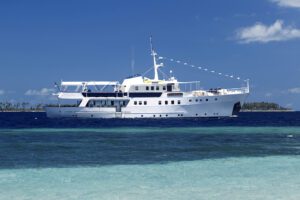
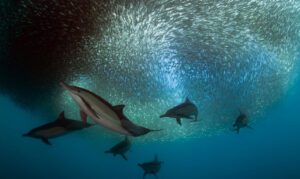
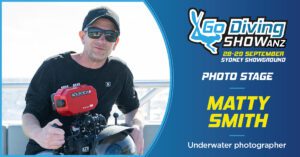
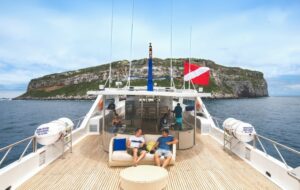
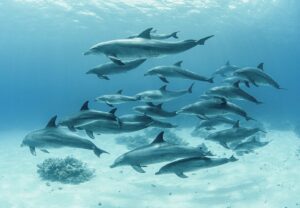
You have missed out the Isles of Scilly, which have multiple wreck sites including one where a 7,000 ton ship sank (1920) across a 2,600 ton ship that sank in 1909. With excellent Atlantic Ocean visibility, it is certainly should be on everyone’s dive list. Plus to the northeast is the Seven Stones Reef with the 119,00 ton oil tanker, the Torrey Canyon (1967).